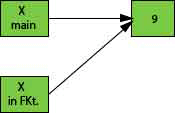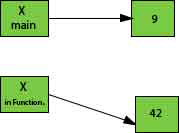

Python Interview Questions And Answers
You’ve probably heard of SQL and once you understand this programming language, you might be tempted to stick with it. However, do you know what PLSQL is? What advantages and benefits can you take if you learn PLSQL? Find out by reading this informative blog post!
PL/SQL is a procedural language introduced during the late 1970s and early 1980s. It was originally known as PL/S and had some features that made it non-interoperable with other SQL implementations. These problems were fixed in
Oracle9i and SQL:2008.
This article will cover all the basics of PLSQL, its language structure, some of the most common interview questions you may encounter, and some more advanced tips. PLSQL is an SQL-like programming language developed by IBM.
The PL/SQL programming language was developed by Oracle Corporation in the late 1980s as a procedural extension language for SQL and the Oracle relational database.
PL/SQL is a block-structured language that enables developers to combine the power of SQL with procedural statements. All the statements of a block are passed to the oracle engine all at once which increases processing speed and decreases the traffic.
PL/SQL extends SQL by adding constructs found in procedural languages, resulting in a structural language that is more powerful than SQL. The basic unit in PL/SQL is a block. All PL/SQL programs are made up of blocks, Python Interview Questions which can be nested within each other.
Reasons to choose PLSQL?
It’s a relational programming language used in the Oracle 10g to 12c database. Plsql is quite popular because building applications in an Oracle Database is so easy with it. There are several reasons why you may want to learn PLSQL.
Even if you’re not specifically looking to expand your programming knowledge, it gives you the opportunity to improve your overall skills and save money. Learning PLSQL will also save time because PLSQL is an efficient way of handling queries without having to write multiple queries for various routine computational tasks.
Features of PLSQL:
PL/SQL is basically a procedural language, which provides the functionality of decision making, iteration, Python Interview Questions and many more features of procedural programming languages.
PL/SQL can execute a number of queries in one block using a single command.
One can create a PL/SQL unit such as procedures, functions, packages, triggers, and types, which are stored in the database for reuse by applications.
PL/SQL provides a feature to handle the exception which occurs in PL/SQL block known as the exception handling block.
Applications written in PL/SQL are portable to computer hardware or operating system where Oracle is operational.
PL/SQL offers extensive error checking.
Advantages of PLSQL:
Python Interview Questions
Tight Integration with SQL.
High Performance & High Productivity.
Portability & Scalability.
Manageability.
Support for Object-Oriented Programming.
Support for Developing Web Applications.
Tips for learning PLSQL:
If you ensure about your PLSQL skills and how to approach a job interview, this blog is for you. It gives you tips on how to prepare for an interview and what questions to expect. One of the main things it talks about is “know your core competencies” which are all the skills that make you comfortable with programming in general.
When learning PLSQL, Python Interview Questions you’ll need to know some basic SQL commands. The most common ones are SELECT, INSERT, UPDATE, DELETE. You’ll also need to know about the data types in SQL. For example, integers are for numbers on a range of 0-9 with no decimal places.
What is the basic structure of PLSQL?
PL/SQL program units organize the code into blocks. The anonymous block has three basic sections that are declaration, execution, and exception handling. Only the execution section is mandatory and the others are optional. The declaration section allows you to define data types, structures, and variables.
What is the trigger in PLSQL with examples?
Triggers are stored programs, which are automatically executed or fired when some events occur. Triggers are, in fact, written to be executed in response to any of the following events like database manipulation (DML) statement (DELETE, INSERT, or UPDATE) A database definition (DDL) statement (CREATE, ALTER, or DROP).
Why is PLSQL needed [Python Interview Questions]?
PL/SQL gives high productivity to programmers as it can query, transform, and update data in a database. PL/SQL saves time on design and debugging by strong features, such as exception handling, encapsulation, data hiding, and object-oriented data types. Applications written in PL/SQL are fully portable.
What are the different types of PLSQL Units?
Following are some different types of PL/SQL units:
Anonymous Block.
Function.
Library.
Procedure.
Package Body.
Package Specification.
Trigger.
What are functions in PLSQL?
A stored function (also called a user function or user-defined function) is a set of PL/SQL statements you can call by name. Stored functions are very similar to procedures, Python Interview Questions except that a function returns a value to the environment in which it is called. User functions can be used as part of a SQL expression.
PLSQL Execution Environment:
The PLSQL engine resides in the Oracle engine. The Oracle engine can process not only a single SQL statement but also a block of many statements. The call to the Oracle engine needs to be made only once to execute any number of SQL statements if these SQL statements are bundled inside a PLSQL block.
What are Data Types in PLSQL?
• Numeric: Numeric values on which arithmetic operations are performed.
• Character: Alphanumeric values that represent single characters or strings of characters.
• Boolean: Logical values on which logical operations are performed.
• Datetime: Declares Dates and times.
Control Structures in PLSQL?
PL/SQL has three categories of control statements: conditional selection statements, loop statements and sequential control statements.
Conclusion:
PLSQL stored procedures are compiled once and stored in executable form, so procedure calls are efficient. Because stored procedures execute in the database server, a single call over the network can start a large job. This division of work reduces network traffic and improves response times.
Frequently Asked Questions:
How do you code in PLSQL?
What is the package in PLSQL?
What are the components of the PLSQL package?
What are identifiers in PLSQL?
Here you will find answers to questions on everything from the features you can expect, all of which makes up part of the PLSQL training from Asha24.
Python was created by Guido van Rossum, and released in 1991.
It is a general-purpose computer programming language. It is a high-level, object-oriented language which can run equally on different platforms such as Windows, Linux, UNIX, and Macintosh. Its high-level built-in data structures, combined with dynamic typing and dynamic binding. It is widely used in data science, machine learning and artificial intelligence domain.
It is easy to learn and require less code to develop the applications.
It is widely used for:
Python is used in various software domains some application areas are given below.
Advantages of Python are:
Interpreted: Python is an interpreted language. It does not require prior compilation of code and executes instructions directly.
Free and open source: It is an open-source project which is publicly available to reuse. It can be downloaded free of cost.
Extensible: It is very flexible and extensible with any module.
Object-oriented: Python allows to implement the Object-Oriented concepts to build application solution.
Built-in data structure: Tuple, List, and Dictionary are useful integrated data structures provided by the language.
Portable: Python programs can run on cross platforms without affecting its performance.
PEP 8 stands for Python Enhancement Proposal, it can be defined as a document that helps us to provide the guidelines on how to write the Python code. It is basically a set of rules that specify how to format Python code for maximum readability. It was written by Guido van Rossum, Barry Warsaw and Nick Coghlan in 2001.
A function is a section of the program or a block of code that is written once and can be executed whenever required in the program. A function is a block of self-contained statements which has a valid name, parameters list, and body. Functions make programming more functional and modular to perform modular tasks. Python provides several built-in functions to complete tasks and also allows a user to create new functions as well.
There are three types of functions:
Example: A general syntax of user defined function is given below.
There are two parameters passing mechanism in Python:
By default, all the parameters (arguments) are passed "by reference" to the functions. Thus, if you change the value of the parameter within a function, the change is reflected in the calling function as well. It indicates the original variable. For example, if a variable is declared as a = 10, and passed to a function where it's value is modified to a = 20. Both the variables denote to the same value.

The pass by value is that whenever we pass the arguments to the function only values pass to the function, no reference passes to the function. It makes it immutable that means not changeable. Both variables hold the different values, and original value persists even after modifying in the function.

Python has a default argument concept which helps to call a method using an arbitrary number of arguments.
Python's constructor: _init__ () is the first method of a class. Whenever we try to instantiate an object __init__() is automatically invoked by python to initialize members of an object. We can't overload constructors or methods in Python. It shows an error if we try to overload.
It is a string's function which converts all uppercase characters into lowercase and vice versa. It is used to alter the existing case of the string. This method creates a copy of the string which contains all the characters in the swap case. If the string is in lowercase, it generates a small case string and vice versa. It automatically ignores all the non-alphabetic characters. See an example below.
To remove leading characters from a string, we can use lstrip() function. It is Python string function which takes an optional char type parameter. If a parameter is provided, it removes the character. Otherwise, it removes all the leading spaces from the string.